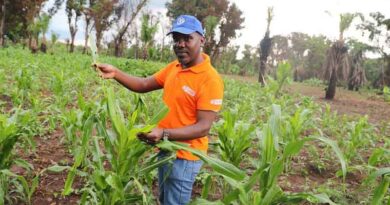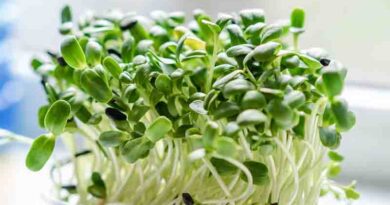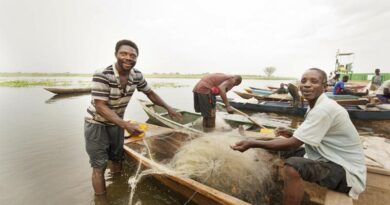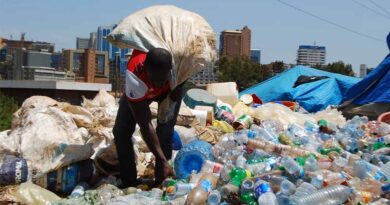Climate change threatening Valentine’s Day roses
16 February 2024, Kenya: Anne Mukei loves flowers. She describes herself as a collector of flowers, especially roses. Therefore, on Valentine’s Day, like today, when lovers celebrate love, Mukei, who lives in Nairobi, Kenya, gets very excited because she expects to receive more bouquets from her loved ones.
“Apart from roses, I also like lilies. But roses symbolize love and beauty, and every corner of my house has them,” she says.
Disheartening news
However, the news that climate change is threatening the growth of the Valentine’s Day rose is “disheartening” to Mukei and many others like her who believe in the month of love.
According to a report by Christian Aid, climate change significantly impacts rose cultivation in Kenya and worldwide. “59 percent of all exported roses come from five Global South countries, which face growing dangers from extreme weather. Three in East Africa: Kenya 19.1 percent, Ethiopia 5.1 percent and Uganda 1 percent, and two in South America: Ecuador 21.2 percent and Colombia 12.4 percent,” reads the report.
Roses need plenty of water. According to the report, this water is getting scarce at an alarming rate as East Africa already faces erratic temperatures and extended droughts, and extreme temperatures are expected to get hotter and more frequent.
The report cites a study that showed that droughts in East Africa between 2020 and 2022 were found to have been more than 100 times more likely and more severe because of climate change.
Patrick Mbugua, the General Manager of Wildfire Flowers Kenya, says that while they have not been affected yet by the lack of water for irrigating flowers, they are concerned that the future may not be as rosy.
Increased disease pressure
The farm’s primary water source is Lake Naivasha, about 95 kilometers west of Nairobi City, which Mbugua says has been stable for the last decade.
“I am very concerned about the impact of climate change on rose growing in Kenya. We’ve seen increased disease pressure due to unusual weather patterns; sometimes we have excessive hot weather, which sees a jump in pests, and other times unusually low temperatures, which increases fungal infections, reducing yields,” he says.
Similar climactic dangers threaten the rose-growing regions of South America. In Ecuador and Colombia, roses tend to be grown in high-altitude Paramo ecosystems, with cooler temperatures and good rainfall.
Due to climate change, temperature increases are expected to be highest in the Andean regions, including the Paramo, and extreme temperatures (number of days above 35ºC) are projected to rise significantly.
Glacier retreat is also a major issue in the tropical Andes, with at least 30 percent of their area lost between 1990 and 2020. This risks water scarcity, which poses a major threat to a water-intensive industry like rose growing. The report warns that millions of livelihoods will be at risk without government action to cut emissions and financially support rose growers and others to adapt to the climate crisis.
Drought that harms rose cultivation
“This is yet another example of the future we face if governments continue to let the climate crisis wreak havoc. Roses are a major part of the Kenyan economy, with more than half a million people relying on them for their livelihoods,” says Mohamed Adow, Director of Nairobi-based climate and energy think tank Power Shift Africa.
“The erratic climate, the extreme temperatures, and drought that harm rose cultivation is what scientists have warned about for years. The inaction of political leaders to reduce carbon emissions has jeopardized an important industry.”
Sibbe Krol, the Director of Sustainability at Bloom & Wild Group, UK’s online florist, says the flower industry needs to look to technology and innovation to reach net zero.
“We are committed to playing our part in the transition with the upcoming launch of bouquets designed and sourced to a carbon budget and the ongoing piloting of sea freight over the air, which could be the game changer the industry needs to reach net zero,” says Krol.
He says this year, they have been piloting sea freight for some of their stems, including roses, grown in Kenya. “We’ve seen great early results in terms of quality, and this new method of transport reduces the footprint of those flowers by another 90 percent.”
Help farmers adapt to a climate crisis
Christian Aid, the authors of the report, calls for more urgent action from governments to invest in renewables and commit climate finance to help farmers adapt to a climate crisis “they did almost nothing to cause.”
“Roses are a special part of the Valentine’s Day tradition, but with many of them grown in parts of the world vulnerable to climate change, their future is far from rosy,” says Christian Aid Director of Policy and Public Campaigns Osai Ojigho.
“These blooms bring joy and are a vital income for growers in the global south, yet these livelihoods are endangered by the rising carbon emissions and the seemingly endless pursuit of fossil fuels from rich nations like the UK,” adds Ojigho.
As various institutions call for more government action to save the lovely rose, Mukei urges her fellow flower lovers and collectors to do their part so that the world can continue enjoying the Valentine’s Day gift for many years.
Also Read: Freight subsidy to promote agri products export from India
(For Latest Agriculture News & Updates, follow Krishak Jagat on Google News)















